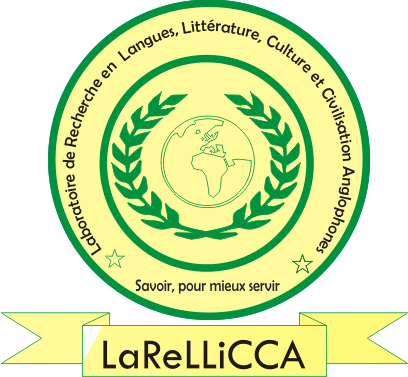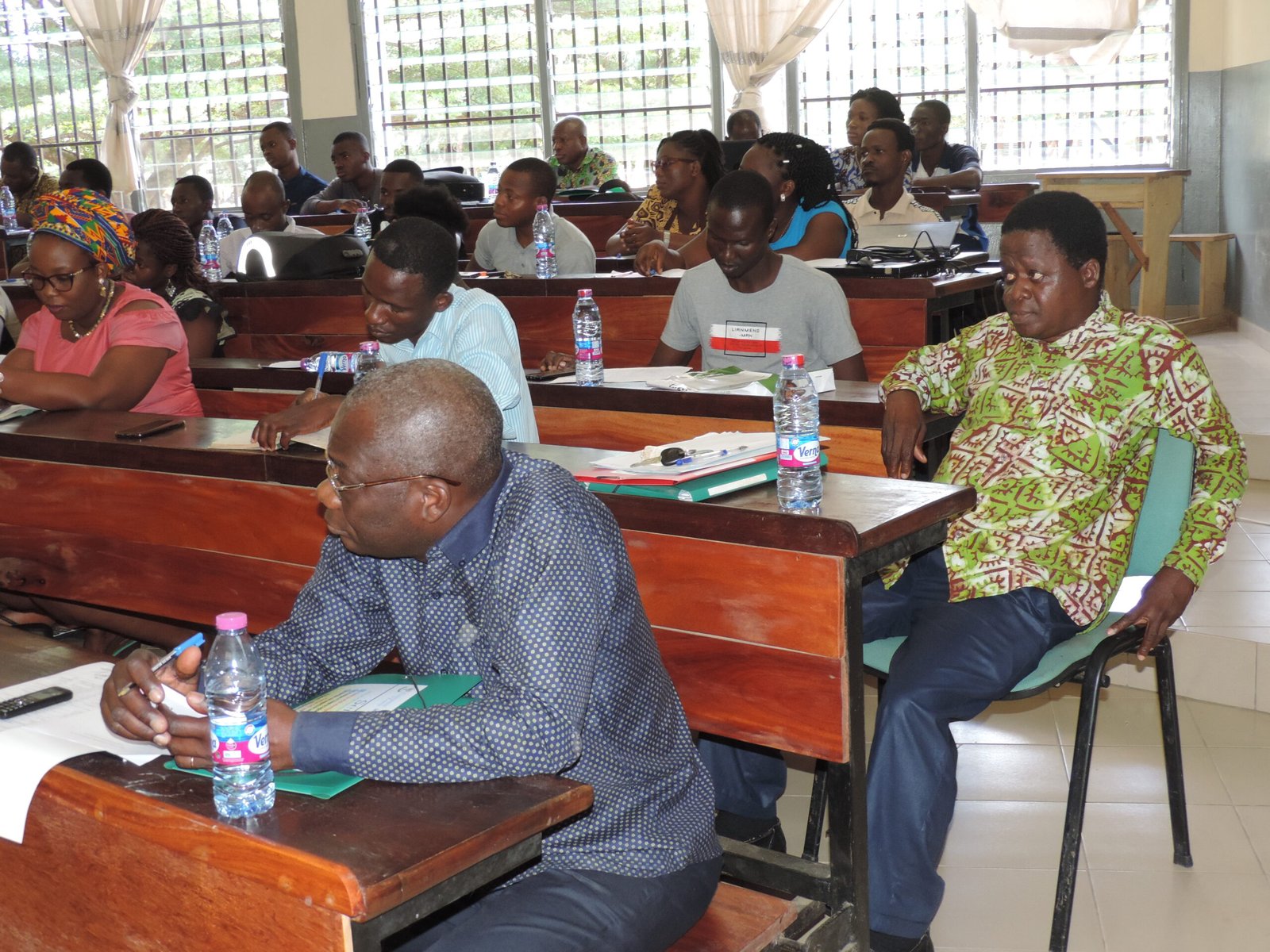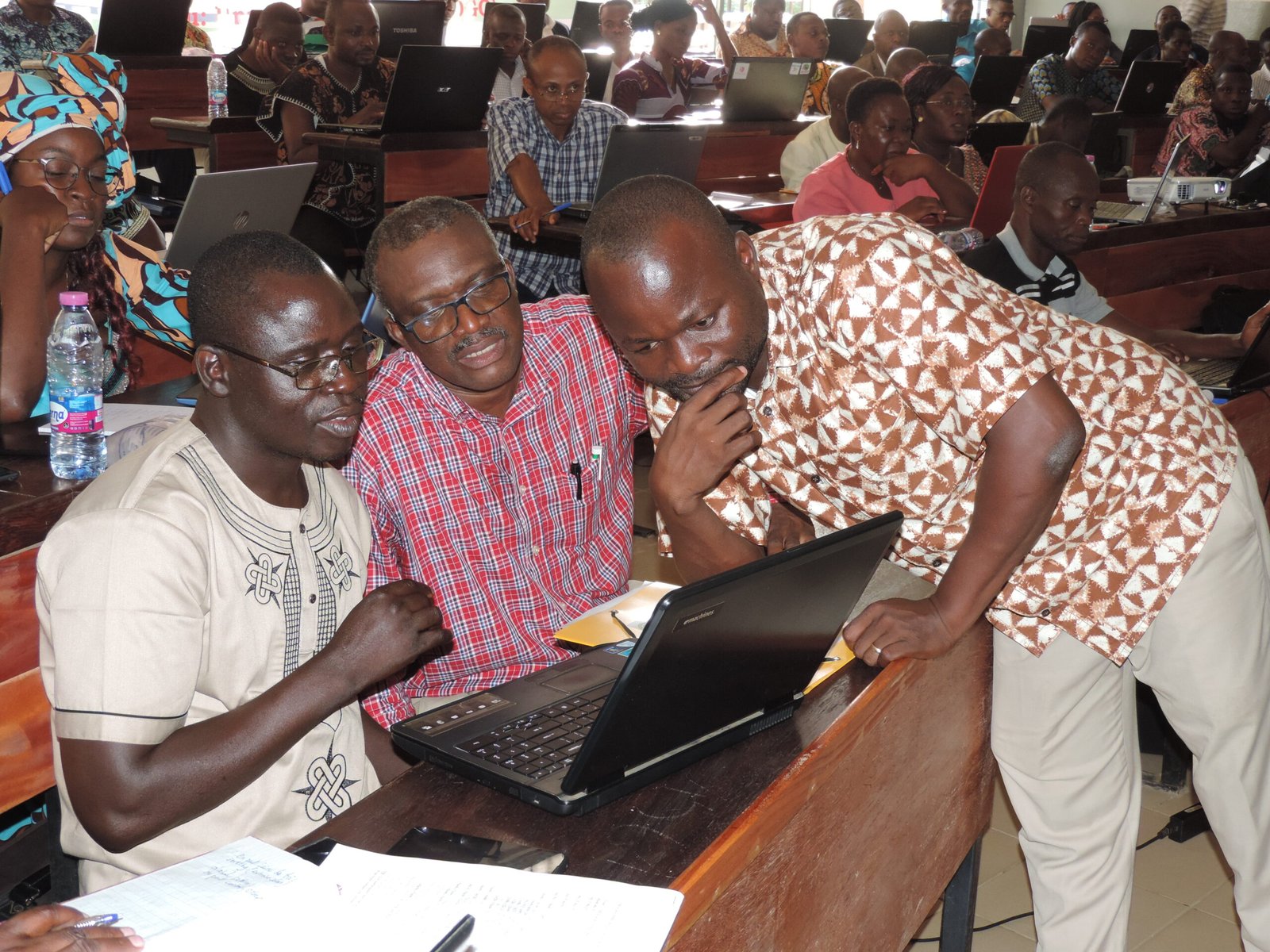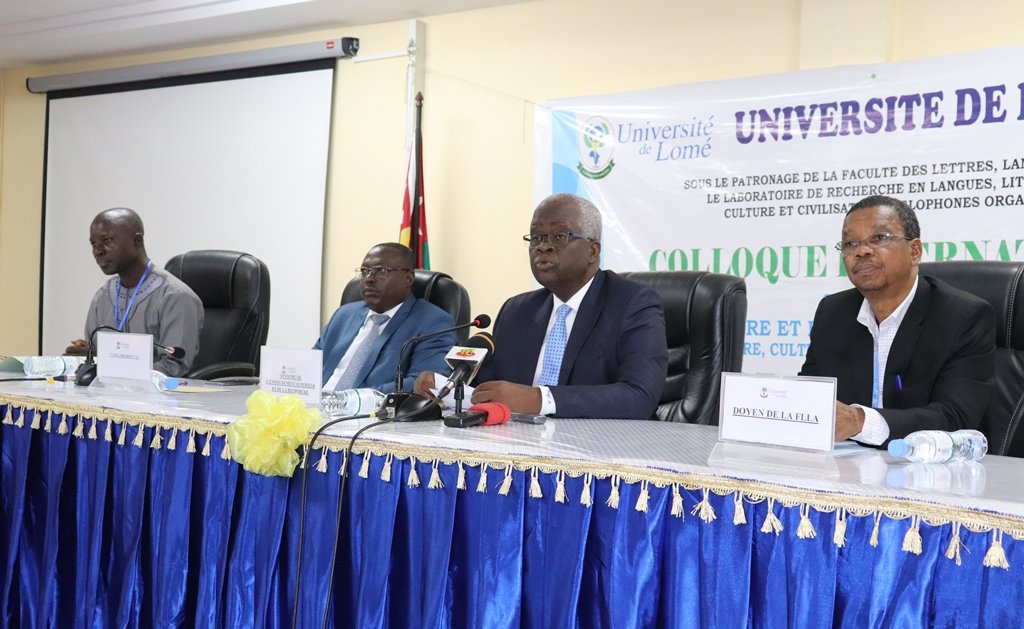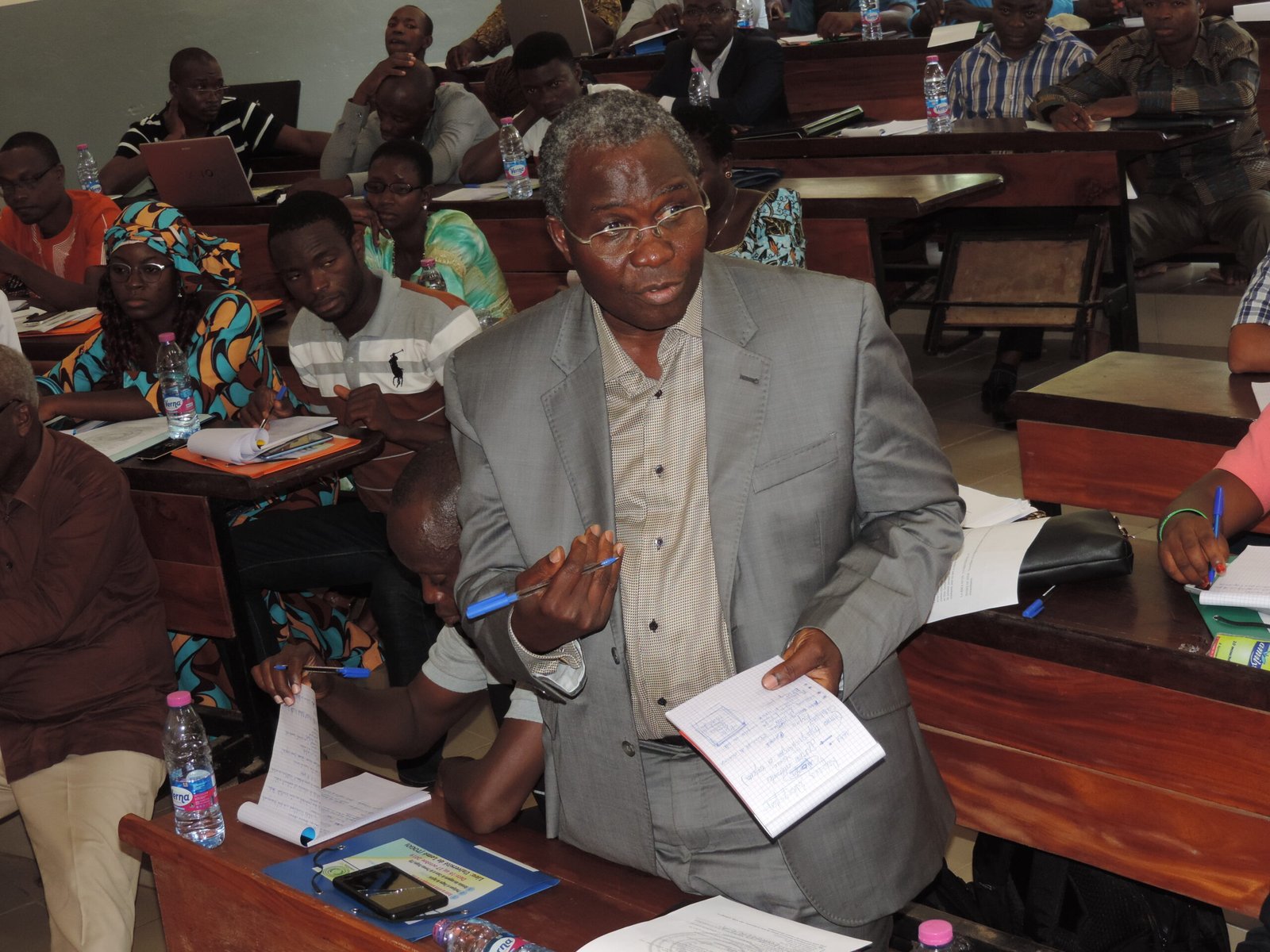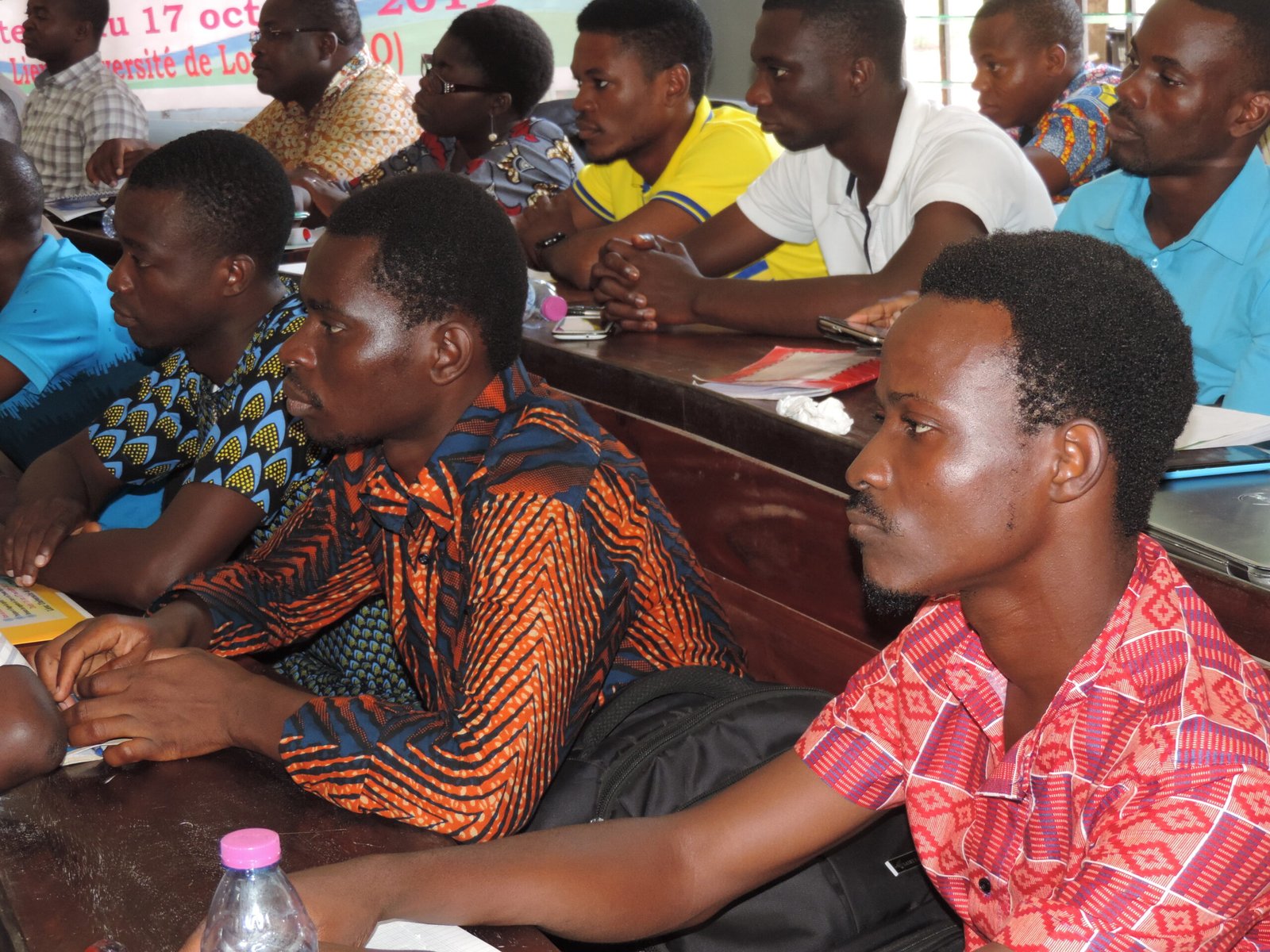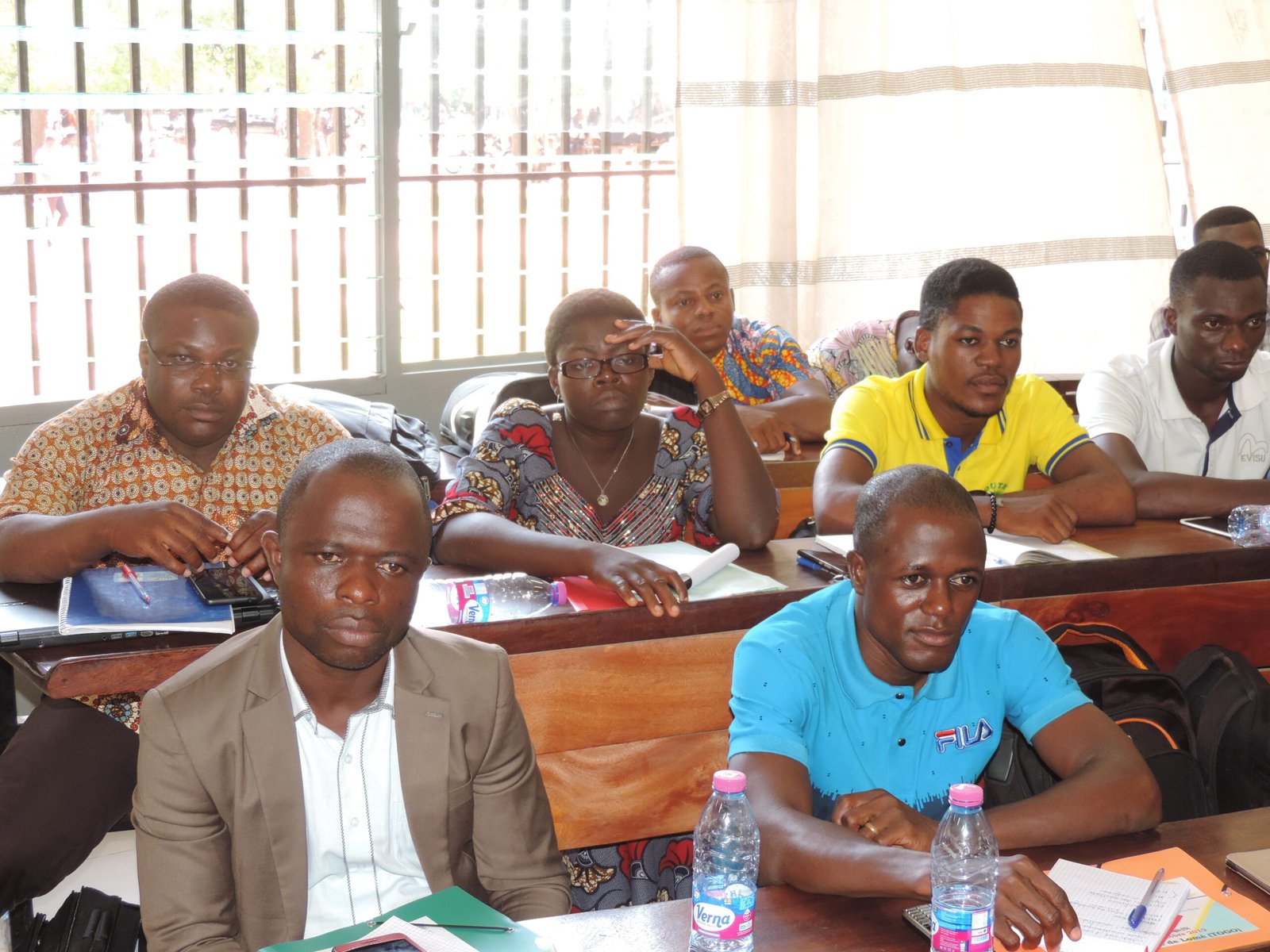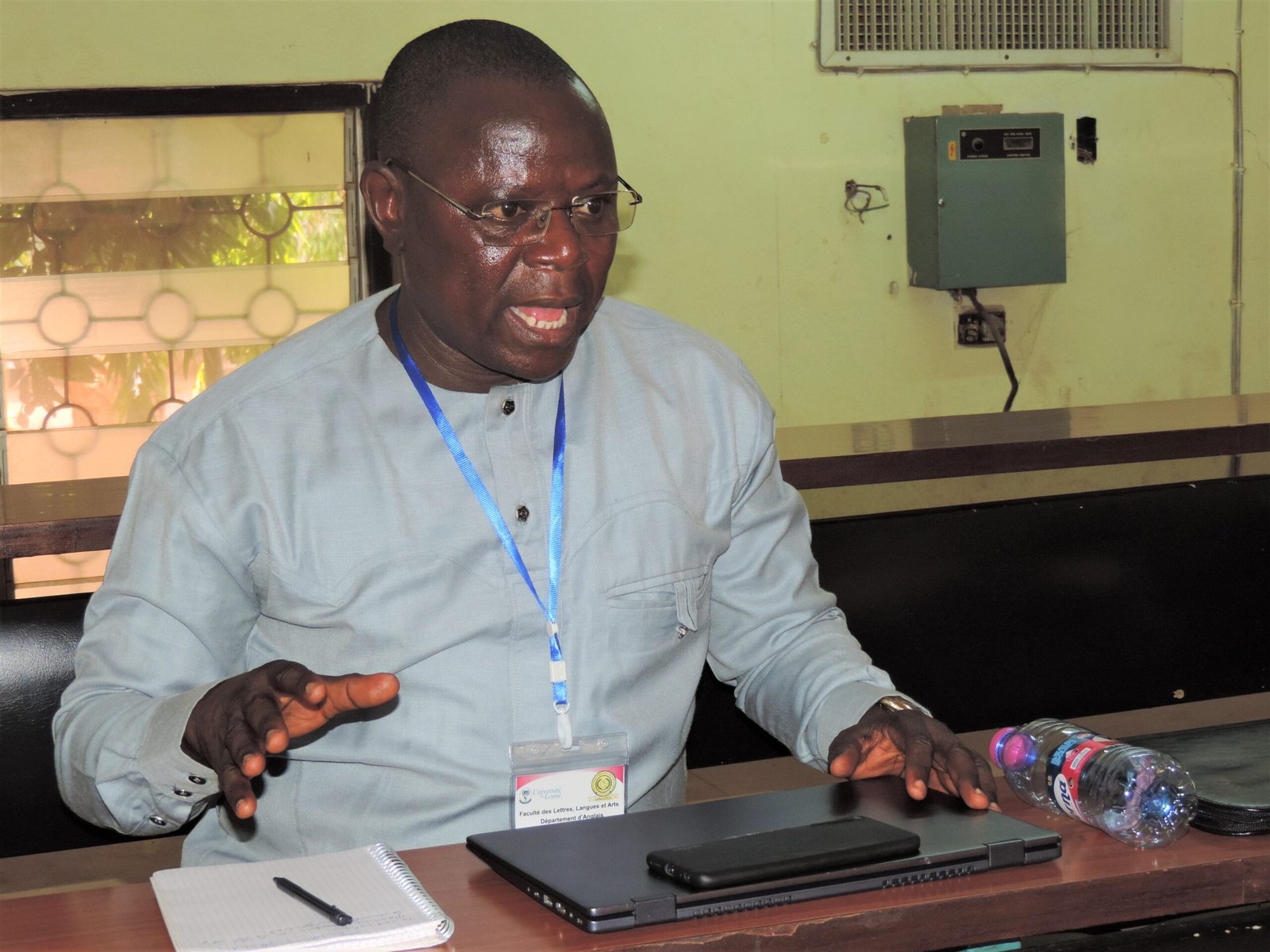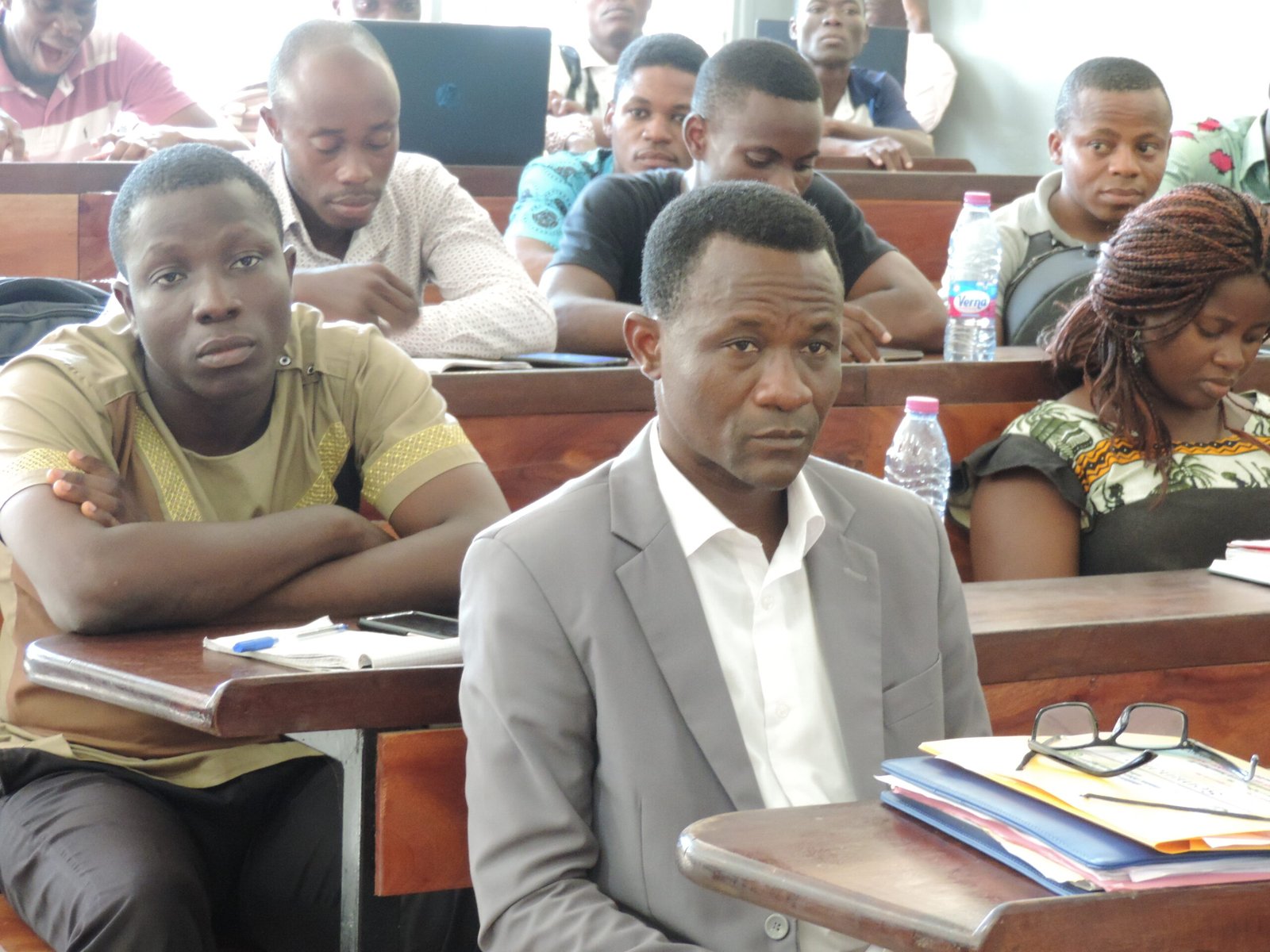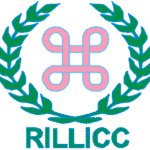
ISSN : 2709-5487
e-ISSN :2709-5495
Site web : https://www.larellicca.com
Courriel : larellicca2017@gmail.com
VOLUME 4
ISSUE N° 2
Article 1 : Analyse morphosyntaxique des pronoms personnels du cʋ́ràmã̀̀
BEOGO Madou
Université Joseph KI-ZERBO
madoube@ujkz.bf
Abstract
The aim of this article is to make a morphosyntactic analysis of the personal pronouns of Cʋ́ràmã̀, a Gur language and the Niger-Congo family spoken in Burkina Faso in the Cascades region. Based on data collected in the field which we analysed drawing on A. Keita’s (2012) theoretical model, the results showed that the personal pronouns of this language have a variety of structures and assume the same syntactic functions as the noun. These functions are essentially that of subject, object and circumstantial.
Key words: pronoun-morphology-function- syntactic -tone-syllable.
Article 2 : Morphosyntaxe des verbes statifs du marka
DAO Nébremy
nehemied1@yahoo.fr
Abstract
Marka verbs are divided into process verbs and stative verbs. This article analyzes the stative verbs of this language. From a process point of view, stative verbs denote non-dynamic processes. These verbs have not been the subject of any morphosyntactic description. The aim of this article is to propose a morphosyntactic description of these verbs in Bomboïla. The theoretical orientation of this study is functionalism through its morphological and distributional analysis approaches. Our approach consisted in documentary research and the collection of 100 simple sentences in Marka through a questionnaire. We found that these verbs have morphological and syntactic characteristics that differ from those of process verbs.
Key words: Marka, stative verb, morphology, syntax, qualifier
Article 3: Le pluriel en espagnol et en baoulé : analyse morphologique
N’ZI Koffi Fulgence
Université Félix Houphouët-Boigny, Abidjan (Côte d’Ivoire)
fulgencekoffinzi@gmail.com
Abstract
In this study we propose to analyse the similarities and dissimilarities revealed by the formation of the plural in Spanish and Baoulé, the kwa language of Ivory Cost. To do this, we first present the methodological and theoretical framework of the study. Next, we proceed to analyse the formation of the plural in Spanish. Furthermore, we will describe the formation of the plural in Baoulé in order to establish the contrast between the two languages. The objective of the present work is therefore to highlight the morphological construction procedures of the plural in the Spanish and Baoulé languages.
Key words : Plural, Spanish, Baoulé, Contrastive study, Morphology
Article 4 :La langue maternelle dans la préservation de l’architecture traditionnelle Baoulé
ATTADÉ Kouakou Faustin
saydess@yahoo.fr
Abstract
In African societies, language is approached as a mark of cultural identity. It takes into account the aspirations of the entire community and is resolutely involved in human activities. The habitat is an entity wich traces the oral and lexical history of each people. However, what is the importance of the maternal language in the field of construction and its planning? Such a question highlights the problem of the naming and designation of construction materials and its results. The objective is to expose the lexicon of the Baoulé people in terms of housing. The work is carried out using semiotics and documentary research applied to an architectural corpus of Baoulé housing. This work proceeds from the hypothesis that the names which designate each constituent element of the dwelling emanate from the mother tongue. The research is organized around the methodology, is interested in the results and their discussion.
Keywords : Architecture, culture, habitat, language, maternal.
Article 5 : La médiatisation des langues maternelles et la sauvegarde des valeurs culturelles dans l’Extrême-Nord Cameroun
BACHIROU Boubakari
Université de Maroua/Cameroun
bachiroubkri2000@gmail.com
Abstract
In the Far North Cameroon, recent years have been marked by a clear improvement in the integration of mother tongues into the traditional media space and in social networks with the appearance of web 2.0. The development of technology drains huge challenges in promoting cultural values. However, the local population does not fully understand the opportunity offered by the media to safeguard cultural identities. This scientific contribution shows how the media coverage of mother tongues contributes to the promotion of cultural values. The functionalist theory has been convened to show the functions that languages can have in the safeguarding of cultural values. Qualitative and qualitative data analyzes showed that mother tongue media covered actively participates in the safeguarding of traditional values.
Keywords: Mediatization, mother tongue, culture, digital space, traditional media
Article 6 : La prohibition des langues togolaises en milieu scolaire de 1922 aux années 1950
BAFEI Abaï
excellencebafei@gmail.com
Abstract
In the French project of domination and cultural destruction, the school was the field of linguistic exclusion in Togo from 1922 to the 1950s. In the school environment, the French colonizer tended to suppress local languages, to despise them in fact and in discourse, basing this contempt on pseudo-scientific arguments, and to despise those who spoke these local languages (L.-J. Calvet, 1974, p. 154). The school was used in accordance with an ideological project that fitted harmoniously into the development of the linguistic superstructure of nascent colonialism. As in France, teaching was to be exclusively in French, according to French standards (N. L. Gayibor, 2011, p. 118). How was the prohibition of local languages reflected in Togolese schools from 1922 to the 1950s ? Based on archival and second-hand documents, this study attempts to explain how the French administrator was able, through legislation and coercive methods, to prohibit Togolese languages in schools from 1922 to the 1950s.
Key words: Prohibition, Togolese languages, school environment, colonial period.
Article 7 : Sémanticité des proverbes dans la chanson Mak daore de l’artiste musicien burkinabè Dez Altino
BELEM Hamidou
Université Joseph Ki-Zerbo, Burkina Faso
belem.hamid@gmail.com
Abstract
This article analyzes the proverbs in Moore contained in the song Mak daore by the Burkinabe musician Dez Altino. Our analysis responds to the problem of the contribution of proverbs in the promotion of cultural values. Its objective is to see how the proverbs contained in the song contribute to the promotion of Moaga culture and it relied on the theory of thematic analysis which served as an analysis grid. After analysis, it emerged that the song addresses the themes of bellicosity, forgiveness, prudence, restraint and humility. Besides the theme of bellicosity, the others were all supported by proverbs. The themes supported by the proverbs are socio-cultural values which show that proverbs are receptacles of social values.
Keywords: Semanticity, thematization, proverb, song, cultural values
Article 8 : La langue moore comme instrument d’alliage des littératures orale et écrite : l’exemple du conteur Ousseni Nikiéma
GARBA Wendmy Désiré
Université Joseph Ki-Zerbo, Ouagadougou, Burkina Faso
Laboratoire Littératures, Arts, Espaces et Sociétés (LLAES)
garba@yahoo.fr
Abstract
Language, being both the primary carrier of cultures and the material of literature, often finds itself at the nexus of tradition and modernity in the African context. This is evident in Burkinabé storyteller Ousséni Nikiéma’s written tales, drawn from African oral tradition, where he merges oral and written literatures using the predominant local language of Burkina Faso: Moore. How, then, is the connection made between African oral literature and written literature through the use of the mother tongue? To answer this, the study primarily employs the concept of hybridness and literary onomastics. It reveals the presence of oral literature within written literature, a result of cultural grounding conveyed through writing style and the mother tongue. Thus, Ousséni Nikiéma emerges as an onomaturge, engaging indirectly in an educational perspective.
Keywords: Moore language, tale/story, oral literature, written literature, cultural grounding.
Article 9 : Place de la langue baatonu dans la socialisation des enfants à Parakou au Benin
GUERA CHABI YORO Yarou
yaroug@yahoo.fr
&
BABADJIDE Charles Lambert
charlesbab@yahoo.fr
Abstract
The mother tongue is the fundamental symbol for promoting and preserving the cultural values of a sociolinguistic group. However, its use in children’s socialization remains problematic. The aim of this research is to identify the influence of parents’ social status in the socialization of children in the Baatonu language in Parakou. Of a mixed nature, 96 actors were approached for data collection, with sampling techniques based on simple chance for the quantitative survey and reasoned choice for the qualitative one. Research techniques included documentary research, direct observation, semi-structured interviews and questionnaire surveys. The data collected were analyzed according to the culturalism of F. Boas (1940). At the end of this research, it emerged that the social status of parents influences the socialization of children in the Baatonu language within this community in Parakou. It should be noted that 80% of parents who have post high school of education and who work in public or private administration do not use the Baatonu language in the socialization of their children, compared with 20% who use this language despite it being considered the majority ethnic group in the locality.
Key words: Place, Baatonu, socialization, Parakou, Benin.
Article 10 : La contribution du logiciel heurist a la conservation des langues ivoiriennes : le cas du betine
KAKOU Foba Antoine
Université Félix Houphouët-Boigny de Cocody-Abidjan
kakoufoba@outlook.fr
Abstract
The advent of digital technology has led to new ways of managing data, particularly linguistic data. In practical terms, the aim is to see how digital technology, through the Heurist programme, can contribute to the sustainable management of the resources of the sixty or so languages that make up the linguistic landscape of Côte d’Ivoire. These languages have different sociolinguistic statuses: some are alive and others are endangered. The analysis will be in two parts: The presentation of the programme’s interface on the one hand, and its role in the long-term conservation of linguistic resources on the other. In terms of results, Heurist promotes the creation and management of language archives that are permanently accessible online. It facilitates and reinforces the sharing of data between users.
Key words: Archive, Conservation, Heurist, languages, digital
Article 11 : Morphogénèse et entendement du système du genre en anglais et en kweni : réflexion psychomécanique sur deux langues maternelles
LE BI Le Patrice
Université Peleforo GON COULIBALY (Côte d’Ivoire)
lebilepatrice@yahoo.com
Abstract
The functioning of grammatical gender seems incoherent in many languages across language families. That incoherence turns the issue of grammatical gender into an enigma hard to puzzle out. That lack of internal coherence which surfaces when dealing with grammatical gender issues seems to conceal a sub-jacent order that the current article aims to unveil by examining a few occurrences of gender manifestations in English and Kweni by resorting to Gustave Guillaume’s Psychomechanics.
Key words: gender system, natural gender, grammatical gender, mother tongue, psychomechanism
Article 12 : L’expression de la deixis sociale relationnelle et de la deixis sociale absolue en mooré
ZAGRE Dieu-Donné
dieudonnezagre084@gmail.com
Abstract
The notion of social deixis refers to the use of a linguistic unit whose referencing to the referent involves the social status of the interlocutors. In Mooré, we distinguish relational social deixis from absolute social deixis. Our study aims to identify the deictic markers of the language that express these types of social deixis and to describe them at both the morphosyntactic and semantic-referential levels. Our work has two (02) objectives: (1) to describe the morphosyntactic characteristics of markers of relational and absolute social deixis in Mooré; (2) to describe the semantic-referential characteristics of these different markers. To achieve this, we draw on the enunciation theory of É. Benveniste (1966; 1974) and C. Kerbrat-Orecchioni (1980). The study reveals that 2nd person singular (f, fo, foom) and plural (y, yã, yãmba) personal pronouns, which refer to tu and vous, express relational social deixis, while consecrated expressions such as naaba and tumaa (response formulas) express absolute social deixis.
Keywords: Enunciation, social deixis, pronouns, referencing, Mooré language
Article 13 : Langue maternelle et appropriation linguistique du français dans Allah n’est pas obligé de Ahmadou Kourouma
DAILA Babou
Université Joseph KI-ZERBO
baboudaila51@gmail.com
Abstract
Our work, which aims to show how the linguistic appropriation of French is done in Allah n’est pas obligatory by Ahmadou Kourouma through the mother tongue, has made it possible, from a lexico-syntactic approach, to show the particularity of French that Birahima, the main character of the novel, uses to construct his speech. Indeed, this atypical French is tinged with Malinké words, the narrator’s mother tongue. Furthermore, we highlighted the code alternation between French and Malinké in sentence constructions. Also, we found layers. Therefore, the French in this novel has a particular flavor which testifies to the culture of the narrator’s environment, and even to the author of this fictional work. Furthermore, the presence of the local language in the African novel of French expression sounds like a style of writing which leads one to believe that the substance of such a literary work can only be mastered by the reader, only by making a immersion in local African languages, hence the need for Africans to develop their languages to better express their thoughts.
Keywords: language, layer, code switching, language, appropriation
Article 14 : Stylistique et sociopoétique de l’héteroglossie dans Silence, on développe et Les naufragés de l’intelligence de Jean-Marie Adé Adiaffi
BROU Konan Luc Stéphane
Université Peleforo Gon Coulibaly, Côte d’Ivoire
klsbrou@gmail.com
&
COULIBALY Daouda
Université Peleforo Gon Coulibaly, Côte d’Ivoire
d.coulibaly09@yahoo.com
Abstract
Silence on développe and Les naufragés de l’intelligence by Jean-Marie Ade Adiaffi stand out on the literary scene due to their heterogeneous nature. Perceptible at the codic level, this heterogeneity is manifested through the tension between French and Agni, the author’s mother tongue. In the architecture of the texts, how does this interaction between these two languages function? What are its implications? This reflection, framed within a stylistic and sociopoetic perspective, reveals that the author employs marking and countermarking. It also observes that the language prism reflects the transculturality of the author and his texts.
Keywords: Stylistics, sociopoetics, heteroglossia, transculturality
Article 15 : L’utilisation de la langue moore dans Le procès du muet de Patrick G. Ilboudo : ancrage sociologique de l’écrivain et vulgarisation linguistique du moore
SAWADOGO/ BOUGOUM Fati
Université Joseph Ki-Zerbo, Burkina Faso
fatibougoum@gmail.com
Abstract
This study is interested in the role and function played by the different moore expressions used by the writer Patrick G. Ilboudo, in his novel. It aims to define the importance of the author’s mother tongue not only in the transmission of knowledge but also in the perception of the value of his culture through the French-speaking novel. The sociocritic study of the plurality of societies is based on the African cultural anchorage which is often manifested by the integration of cultural elements such as oral literature, for example, into the written genre. The study allows us to grasp both the source of inspiration of the author and the mechanisms of production of meaning of the Moore expressions used in the novel by this writer. These cultural elements define the value of this language and also constitute identity characteristics of the author. Understanding and analyzing the importance of the Moore language in this novel and the semantic integration mechanisms of the moaaga lexicon are the results to be achieved in this study.
Keywords: African culture, identity, importance, Moorish language, process of the mute, sociocritical.
